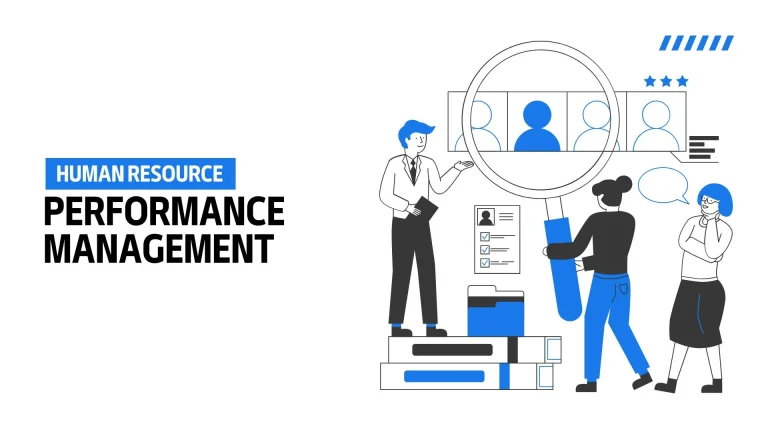How AI-Driven Analytics and Automation Are Revolutionizing Business Decision-Making
Artificial Intelligence (AI)-driven analytics and automation have become game-changers, transforming how businesses gather insights, analyze data, and make decisions. These technologies not only enhance decision-making but also automate many operational processes, improving efficiency and reducing errors. As businesses adapt to these innovations, AI-driven analytics and automation are increasingly integrated into everyday business practices. This article explores how these technologies are revolutionizing business decision-making.
The Role of Artificial Intelligence in Modern Business
AI is no longer a futuristic concept but a present-day reality for many businesses. From small enterprises to large corporations, AI technologies are being used to enhance decision-making processes. In particular, AI provides two major contributions to business:
- Improving Operational Efficiency: AI reduces the need for human intervention in routine tasks. Automated systems can handle repetitive tasks like scheduling, data entry, and customer service inquiries, saving time and freeing up employees to focus on more strategic initiatives. AI also helps businesses optimize operations by detecting inefficiencies and suggesting improvements.
- Enhancing Decision-Making: AI can process vast amounts of data in a fraction of the time it would take a human. It can detect patterns, identify trends, and provide actionable insights, empowering businesses to make data-driven decisions. These AI systems also adapt over time, learning from new data and continuously improving the decision-making process.
Understanding AI-Driven Analytics: Key Concepts and Technologies
AI-driven analytics is the process of using AI to analyze large datasets and derive meaningful insights that can inform business decisions. There are several key components involved in AI-driven analytics:
- Machine Learning (ML): ML algorithms enable AI systems to learn from data without being explicitly programmed. These systems improve their accuracy over time, becoming more effective as they are exposed to new information.
- Natural Language Processing (NLP): NLP allows computers to understand and interpret human language. This technology is used to analyze customer feedback, emails, and social media posts, providing businesses with insights from unstructured data sources.
- Predictive Analytics: Using historical data, AI can forecast future trends, behaviors, and outcomes. This is invaluable for businesses looking to anticipate market changes, customer needs, or operational demands.
How AI-Driven Analytics Transforms Data Insights
One of the most powerful features of AI-driven analytics is its ability to analyze large datasets quickly and extract meaningful insights. Traditional methods of data analysis can be slow and often miss key patterns, whereas AI can sift through massive amounts of information in real-time and identify trends that would otherwise go unnoticed.
- Real-Time Data Analysis: AI systems can analyze data as it is collected, providing businesses with up-to-the-minute insights. This allows organizations to make real-time decisions based on the most current data available, which is particularly important in fast-moving industries like finance and retail.
- Actionable Insights for Decision-Making: AI doesn’t just analyze data; it also offers actionable recommendations. This makes it easier for business leaders to make decisions based on concrete evidence, improving the quality and speed of their choices.
The Role of Automation in Business Processes
Automation plays a significant role in enhancing business operations. AI-driven automation refers to the use of intelligent systems to perform tasks that would normally require human intervention. This has several important benefits:
- Reducing Manual Labor: Many routine tasks, such as processing invoices, managing inventory, and responding to customer queries, can be automated with AI. This reduces the need for human involvement, freeing up employees to focus on more valuable activities.
- Improving Accuracy and Consistency: Human error is an inherent risk when tasks are performed manually. AI-driven automation minimizes these errors, ensuring that tasks are carried out accurately and consistently.
- Increased Speed: Automation can dramatically speed up business processes, allowing companies to respond to customer requests, manage resources, and process transactions faster than ever before.
How AI and Automation Work Together to Improve Decision-Making
When AI and automation are combined, the result is a more efficient and data-driven decision-making process. AI can analyze data and provide insights, while automation handles routine tasks based on those insights. Here’s how they work together:
- Faster Decision-Making: AI-driven analytics provides decision-makers with real-time insights, while automation ensures that actions are quickly implemented. For example, if AI analytics detect a drop in sales, automation can trigger the necessary adjustments in marketing or inventory management without human intervention.
- Data-Driven Decisions at Scale: AI allows businesses to process and analyze data on a massive scale, uncovering trends and patterns that might have been missed with traditional methods. Automation then acts on those insights, ensuring that decisions are executed at scale across the organization.
The Benefits of AI-Driven Analytics and Automation for Business
The integration of AI-driven analytics and automation offers businesses a wide range of benefits, including:
- Improved Efficiency: By automating repetitive tasks, businesses can save time and reduce costs. AI also identifies inefficiencies, helping organizations optimize their processes and workflows.
- Cost Reduction: While there is an initial investment in implementing AI and automation, the long-term cost savings are significant. Businesses can reduce labor costs, minimize human errors, and avoid inefficiencies, leading to better financial performance.
- Informed Decision-Making: AI-driven analytics provides businesses with data-backed insights, helping decision-makers make more informed, evidence-based choices. This leads to improved outcomes in areas like marketing, sales, customer service, and operations.
- Enhanced Customer Experience: AI-powered systems can personalize interactions with customers, delivering tailored recommendations and responses based on individual preferences and behaviors. Automation ensures these interactions happen in real-time, improving overall customer satisfaction.
Real-World Examples of AI-Driven Analytics and Automation in Action
AI-driven analytics and automation are already being used in various industries to improve decision-making and operational efficiency. Here are some examples:
- Customer Service: Many companies are using AI-powered chatbots and virtual assistants to provide real-time customer support. These systems can handle inquiries, resolve issues, and offer personalized recommendations without human involvement.
- Marketing: AI analytics help businesses create targeted marketing campaigns based on customer data. AI tools can predict customer preferences and behavior, allowing for personalized offers that increase engagement and conversion rates.
- Supply Chain Management: AI-driven systems can predict demand fluctuations, optimize inventory levels, and automate logistics management. This enhances supply chain efficiency, reducing costs and improving service delivery.
Challenges of Implementing AI and Automation
While the benefits of AI-driven analytics and automation are clear, businesses face several challenges when implementing these technologies:
- Data Privacy and Security Concerns: With the increased use of AI, businesses must ensure they protect customer data and comply with data privacy regulations. Securing AI systems against cyber threats is crucial to maintaining customer trust.
- Lack of Skilled Talent: Implementing AI and automation requires a workforce with specialized skills. Many businesses face challenges in hiring or training employees who have the expertise necessary to manage and optimize these systems.
- Initial Investment Costs: While AI and automation can deliver long-term savings, the upfront costs can be prohibitive for smaller businesses. However, as AI technologies become more affordable, the barriers to entry are slowly being reduced.
The Future of AI and Automation in Business Decision-Making
The future of AI-driven analytics and automation is incredibly promising. Emerging trends, such as the use of edge computing and 5G technology, will make these systems even more powerful and efficient. Over the next few years, we can expect to see:
- Greater Integration Across Business Functions: AI and automation will become deeply integrated into every part of business operations, from marketing to HR to finance, further streamlining workflows and enhancing decision-making.
- Smarter and More Adaptive Systems: As AI continues to evolve, the systems will become more intelligent, able to predict future trends with even greater accuracy and adapt to new situations without requiring human intervention.
Conclusion: Harnessing the Power of AI for Smarter Business Decisions
AI-driven analytics and automation are reshaping the way businesses operate and make decisions. By leveraging these technologies, companies can not only improve operational efficiency but also enhance decision-making, create personalized experiences for customers, and drive profitability. As AI continues to evolve, it will only become more essential for businesses looking to stay ahead of the curve and thrive in an increasingly competitive marketplace.






